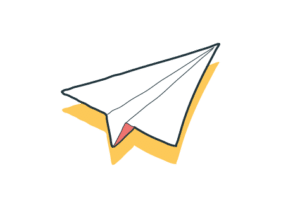After the Beirut Blast on August 4th last year, the devastated neighbourhood of Karantina has swelled with rehabilitation initiatives. The area is buzzing with construction and aid workers, children and their families. Momentarily, the neighbourhood seems to have transformed into one big public space where these groups come together.
With daily walks around the neighbourhood we’ve seen children using the streets as their playground, while adults and caregivers sit on sidewalks, the edges of the streets and on the steps of their homes as they watch their children playing. Younger children on the other hand appear to be restricted to playing inside their homes, or are closely watched by older siblings. After the forced closure of Karantina Public Garden in response to Covid-19, this is hardly surprising.
These observations – the way in which public space is used and inhabited by the residents of Karantina – provide valuable insight into how the recovery of Beirut post-explosion can address some of the vulnerabilities that affect different groups living in the neighbourhood. In partnership with RELIEF Centre, DPU and IGP at UCL – as part of a GCRF funded project – we’ve started a research project which seeks to expand research of public spaces in Karantina, to understand the ways in which residents can participate in the design and co-production of interventions that address their vulnerabilities and ensure an inclusive urban recovery process.
We started this project by working on a participatory spatial intervention in Karantina that builds to create a child friendly public space in the neighbourhood. This project, called the Karantina Neighbourhood Intervention, is a partnership with UNICEF Lebanon and TDH Italy, and in collaboration with AUB Neighbourhood Initiative. Central to the entire project, is the role of citizen scientists (CS). These are members of the community who are trained to work as social scientists and conduct research that accurately rejects what their community needs. For this research project in Karantina, we relied on the network we have been establishing in the neighbourhood since 2016 to find candidates who were excited and passionate about the project.
The four CSs that were selected worked with a team of two trained researchers from the Prosperity Index of Mina Project, conducted in collaboration with RELIEF centre. The group was made up of Lebanese and refugee communities representative of different genders, ages and educational backgrounds.
Throughout the project the citizen scientists focussed on how public space and participatory approaches could help address some of the challenges faced by Karantina’s residents. Complementing the work done on the Karantina Neighbourhood Intervention project, they used the research methods they had learnt to gauge how public space was understood in Karantina. They explored questions including how public space is denied, what areas could be identified as public spaces in the neighbourhood, and what the main vulnerabilities are that can be linked to the use of these spaces.
After learning how to collect data through participatory observation methods, transect walks and semi-structured interviews, the citizen scientists were assigned three different areas to observe as possible sites of intervention. In the following weeks, they noted several challenges including children playing on unsafe roads, people having to use private land as public space, and the lack of safe and accessible play areas for children with disabilities. These ndings were complemented by semi-structured interviews in which the CSs heard that caregivers don’t use public spaces because there is not enough safe space for their young children to play. They also discovered from senior residents that when their grandchildren come to visit, there is nowhere for them to play as the public park has irregular opening hours. Lots of interviews also highlighted the community’s needs for more green spaces in the neighbourhood.
All of these findings informed the initial design of the Karantina Neighbourhood Intervention which was shared with the community in a design consultation. Held on site, the drawings were put on boards for residents to see and give their feedback on. The consultations showed that residents approved of many aspects of the design, including the choice to have a colorful space, a green barrier to protect it from the road, and the idea of creating a mural with a message. However, there were also lots of suggestions that the designers hadn’t thought of, demonstrating the importance of this kind of participation. For instance, participants suggested that the space should have a name which could be engraved on a signpost and inserted on the entrance of the space to make it feel more attractive to passersby. The final design of the Karantina Neighbourhood Intervention was informed by the groundwork conducted by the CSs and the feedback they received from the community at the design consultation.
Looking beyond this project, the CSs took what they had learnt and heard from the community to take a wider look at the vulnerabilities in Karantina. They did this by creating problem trees which helped to highlight the main issues facing residents in the neighbourhood, what their root causes are and the different groups of people who are affected by them. The issues they noted included political despotism, military presence, pollution and related health problems, rising social and economic tensions in response to the Beirut explosion, COVID-19 and the ow of NGOs to affected areas. These problem trees were then used to create solution trees in which CSs laid out their vision for “the ideal Karantina” and the steps that would need to be taken to get there. Many solutions were proposed, but the main focus was on children, their education and their right to play in safe spaces within their community.
Now that the spatial intervention is built, Karantina’s Citizen scientists continue to monitor how the space is used. With this learning and insight we are continually reecting on co-design and the role it can play in Beirut’s recovery to inform future interventions.
We received your application and we will be in touch soon. In the meantime please consider subscribing to our newsletter:
